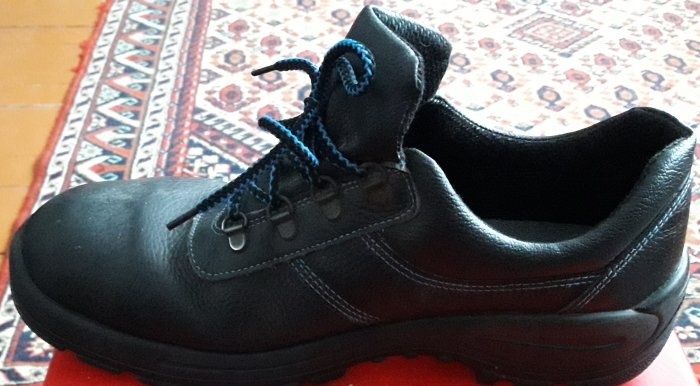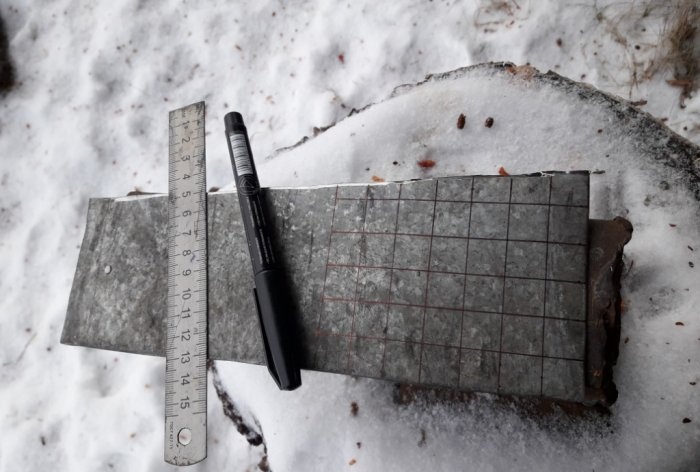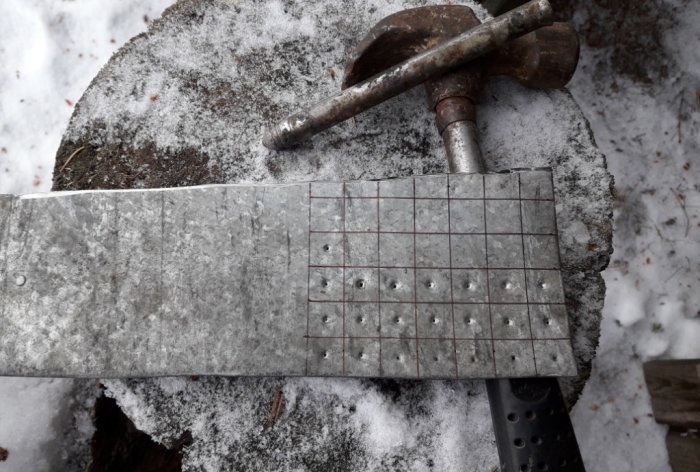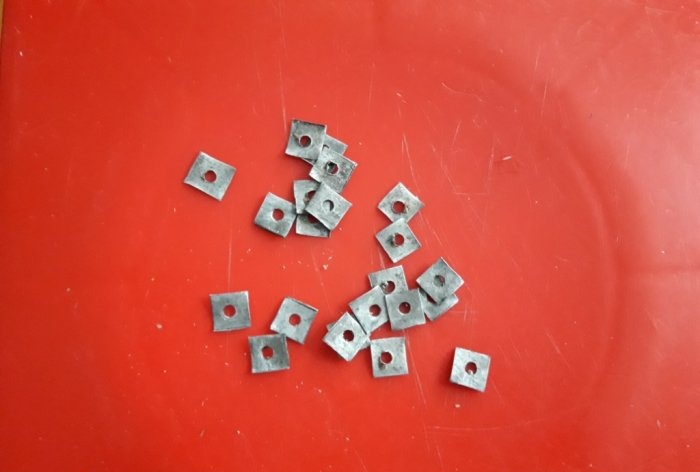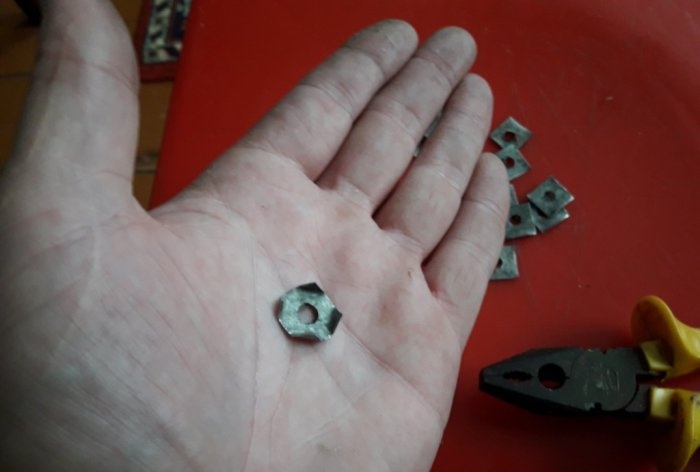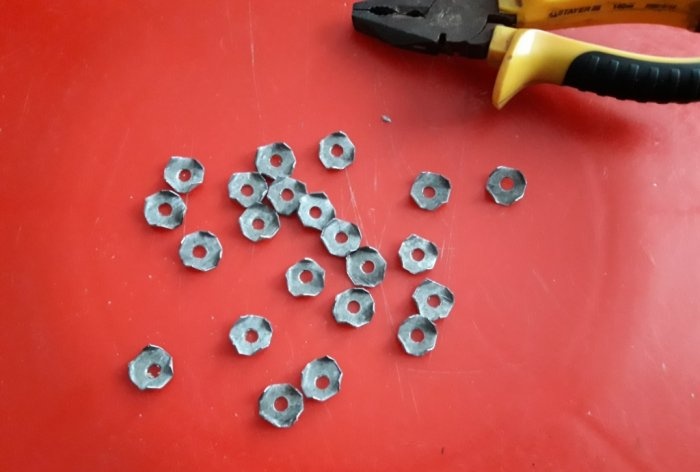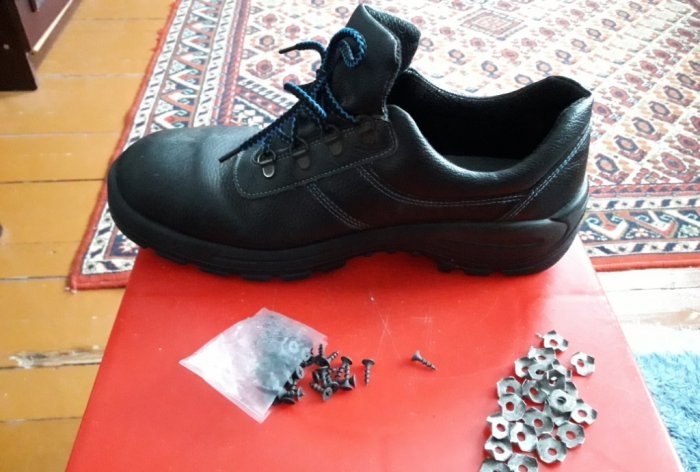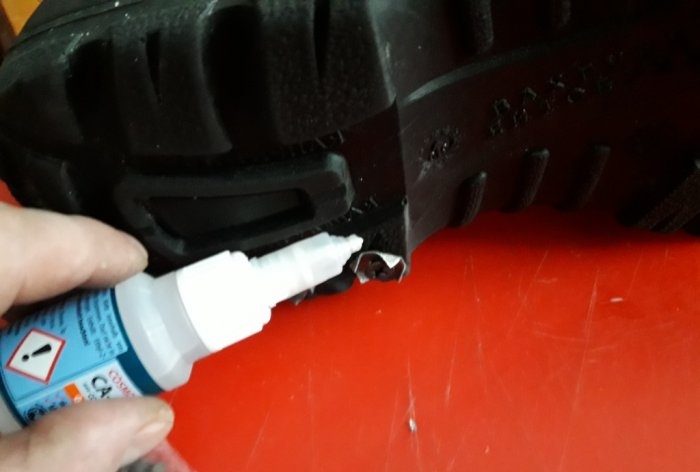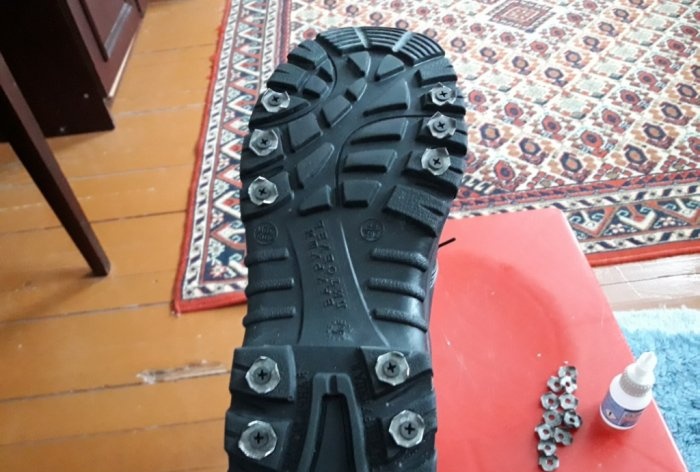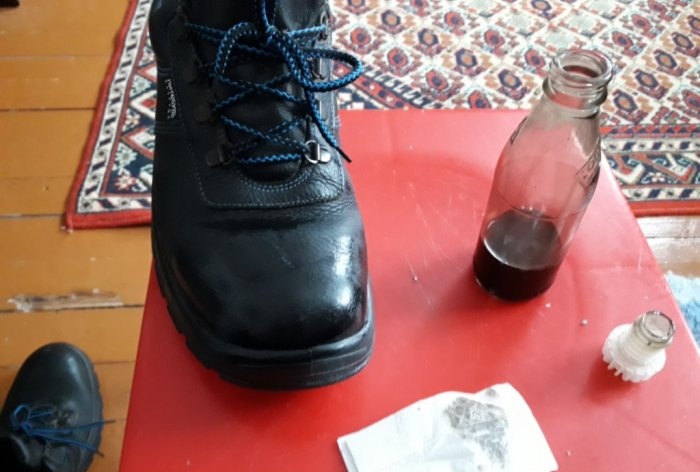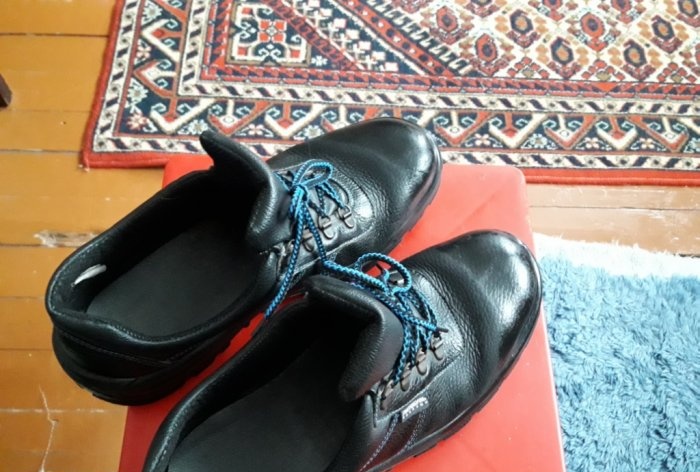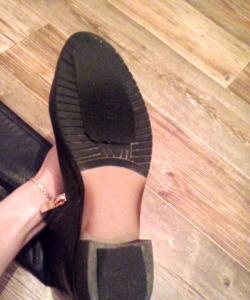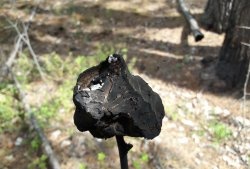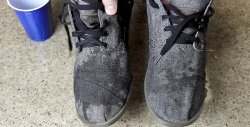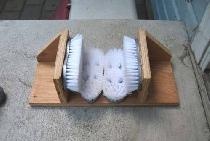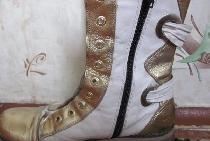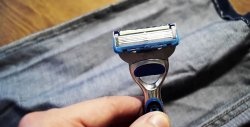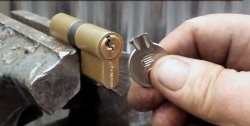In late autumn and winter, ice is common. Not everywhere the footpaths are strewn with sand, so at this time traumatologists are rarely idle. Slipping on ice and breaking your arm or leg is a simple matter. A split second and it's done. Laying around with a broken leg for three weeks, and then rubbing your armpits with crutches for another month is not a happy prospect at all. Therefore, people show all the wonders of their ingenuity so as not to end up in a hospital bed! Some people buy winter shoes with spikes already built into the soles, some people glue special non-slip pads to the soles, and some people try not to leave the house unless absolutely necessary. I can’t sit quietly at home on weekends and holidays - I always walk 7-8 km. through the forest, along a path specially trodden by runners and walkers like me. This route is replete with quite steep descents and ascents.
It is clear that no one in the forest will sprinkle sand on the road. That’s why I’ve been equipping my shoes with homemade spikes for several winters in a row.This is a short-lived affair; It takes me about an hour to make the spikes themselves, as well as to install them. But then you don’t have to worry about your hands and feet for the rest of the winter and the coming spring, until the snow melts. But, as in any business, here, in addition to numerous advantages, there are also disadvantages; Such a spike will hold well and work effectively only on a sole made of dense, elastic rubber. On soles made of soft and elastic rubber, the spikes will not stick, no matter how hard you attach them... a couple of walks and there will be no trace of the spikes left. And literally! But soles made of such soft rubber are usually made for summer shoes, for running shoes, or for playing basketball in the gym, so there is little chance of making a mistake. Still, it’s better to be sure.
Will need
- Sheet metal (1mm thick)
- Screws (preferably black, for wood - they are more tenacious, 15 mm long.)
- Metal scissors.
- Ruler.
- Marker.
- Kerner.
- Hammer.
- Pliers.
- Phillips screwdriver.
- Drill.
- 4 mm drill.
- Secondary glue.
Shoe studding
First, you need to clean the shoes and their soles from sand and dust, and while we are making spikes, you can put them on a warm radiator. We will make the spikes from galvanized sheet metal, one millimeter thick.
So, using a ruler and a marker, we apply markings on the metal in the form of a regular cell. The area of each square should be 15x15 millimeters.
Next, we take a punch and a hammer, and in the center of each square we make a mark for the drill. We drill four millimeter holes in each square with a drill and a drill bit, in the place punched by the center punch.
Using metal scissors, cut out the drilled squares.
Here I would advise it is better to cut them using a small grinder with a thin cutting wheel, if such tools are available, because the metal is too thick for scissors, and I crushed all my fingers and palms! After cutting, take pliers and bend the corners of each square to one side. How long to bend the corners depends on you - how long you would like the tenons to be. The main thing is that the screw head fits between the bent corners.
Now we remove the warm shoes from the heating radiator and screw ready-made spikes onto the pre-selected tread. There is one subtlety here - after tightening the screw three-quarters, I also drip a second of glue onto the thread, and only then drive the screw completely into the protector.
Just in case. It definitely won't get any worse.
We're done with the spikes. Now let's move on to the moisture-repellent composition.
Will need
- Birch tar.
- Solvent.
- Some cologne (a few drops as a fragrance).
- Cotton pads or napkins.
- Latex gloves.
- 250 ml bottle.
Shoe impregnation
Birch tar can be purchased at any pharmacy, but I got it in advance, back in the summer, in sufficient quantities for such needs. I already told you how to remove tar from birch bark once, in a master class on making mosquito repellent. However, this is not the season; extracting tar from birch bark in winter is a headache... So, we dilute birch tar with a solvent in a bottle, in proportions of one to one. Shake thoroughly. Inject approximately one cube of any cologne of your choice into the finished mixture with a syringe. Shake again. We put rubber gloves on our hands to avoid getting dirty, moisten a napkin with the prepared solution and apply it to the shoes.
We don’t regret the solution! Thanks to the solvent, it will penetrate into all pores of the shoe. Very soon the solvent will evaporate, and the tar will remain inside, and will protect the material from which the shoes are made from moisture. We also don’t forget about the seams that connect the walls of the shoes with the sole. The seams must be soaked 2-3 times, with a break of 30-40 minutes, since this is the most vulnerable spot of the shoes. Moreover, impregnation here has a double benefit; In addition to its water-repellent properties, it will slow down the smoldering and fraying of the seam thread and, as a result, the wear of the thread and the further disintegration of shoes and soles. We put the shoes on a warm radiator. The next morning, you can safely put on your shoes for a walk or work, and any bad weather will be no problem.
The main thing is to keep your feet dry, warm and comfortable, then illnesses will bypass you. The shoes hold confidently on ice, on trampled snow, and also do not slip on smooth tiles, thanks to the fact that the spikes are located on the sides of the sole - the rubber in the center of the sole easily reaches the smooth tiles and prevents slipping.
